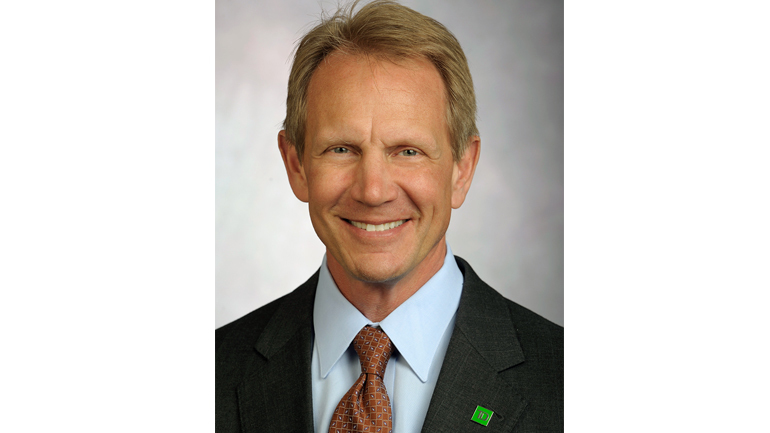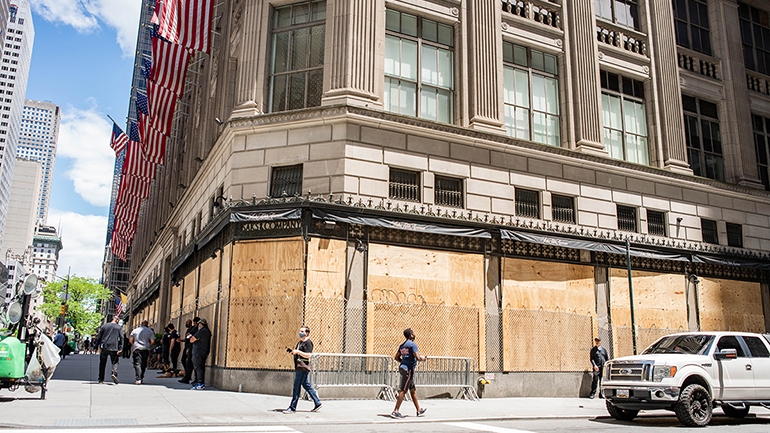Social distancing, a potential vaccine and new norms will affect us for years to come
By Gregg Gerken – Head of U.S. Commercial Real Estate Lending, TD Bank

Many industries, businesses and leaders have adapted to the short-term impacts of COVID-19. While certainly helpful for the "here and now," it may be more important for businesses to think about how the pandemic may permanently reshape industries.
This pandemic was certainly swift and unprecedented, yet it may have lasting ripple effects that cut across so many sectors for years to come.
At the heart of this discussion lies the commercial real estate sector, which may see long-lasting changes, particularly as it pertains to office space.
According to TD Economics, COVID-19 is expected to cause a near-term pullback in new leasing and sales transactions through the rest of 2020.
The major eastern metropolitan areas – New York, Boston and Miami -- are likely the most exposed to the downturn, given their current elevated supply and dense populations. New York is also highly exposed to crowded working spaces, which had come under pressure even before COVID-19.
In short, the demand drivers for office space is pointing to a negative outlook for some markets as tenants reassess their work-from-home models. Some companies have moved to a hybrid work-from-home and office system to combat the spread of the virus.
Seeing opportunity amid the rapid change
With change comes the opportunity to innovate with fresh solutions to possible inventory overload and other issues such as dense populations, safety and wellness.
While the pandemic will likely lead to slower growth in office demand, it will help accelerate trends that were already happening before the health crisis began.
Teleworking, voice recognition, automation and artificial intelligence have all led to reduced demand for office space. This pandemic may have kicked these trends into high gear.
Employer preferences and pressure to cut costs may cause a shift away from dense office markets to a working-from-home schedule or perhaps increase demand for lower cost suburban office space.
Despite these potential trends, certain positions provide some offsetting forces to favor the office environment – particularly true for jobs that are sensitive to privacy and security issues. If we see more finance or business services move to more flex-style work arrangements or move toward increased space per employee, this could help balance the scales. Let's also remember that culture and collaboration are key to the long-term success of any organization.
Trends to keep an eye on
We've been tracking three leading indicators of how the long-term commercial real estate sector will fare moving forward -- including unemployment, rent collections and leasing.
We're paying attention to those things as well as structural shifts such as the increased ability to work from home. While the impacts of the latter are still somewhat unclear, it is reasonable to assume that the effects will likely land somewhere between the two extremes of everyone working from home and everyone returning to the office.
"So, what does this new model mean?" For one, expect to see safety concerns prioritized over the bottom line, which could help bring an equilibrium to the commercial office space environment.
While an increased teleworking presence will lead to less demand for office space, it's safe to presume that at least some offset would come in the form of a larger footprint per employee in order to ensure safe social distancing.
For example, a business looking to occupy two floors of office space may expand to three to promote the type of physical distancing that may become the norm in the future. We're watching things like this play out as we speak.
Will a Rebound Take Months or Years?
Now, for the downside.
While the virus is still present, traditional office hubs in major metropolitan centers reliant on crowded mass transit are likely to become less popular, as companies move to more fragmented satellite offices located outside of the downtown core.
There was a similar parallel after the tragedy of 9/11, at least in New York, when companies reconsidered a concentration of all their employees in office towers.
New York obviously came back, both emotionally and physically, better and stronger than ever, but it took time.
But COVID-19 is obviously vastly different from things we've seen in the past, including 9/11 and the Great Recession of 2008.
The biggest factor hanging over our heads is the timing of an eventual vaccine and how it will play a major part in a possible time-table for commercial real estate's resurgence.
Clearly, the sooner we get clear re-opening guidelines and a vaccine, the sooner we will see more workers confidently return to the office.
But, the longer it takes, the more embedded some of these shifts to working from home will be.

